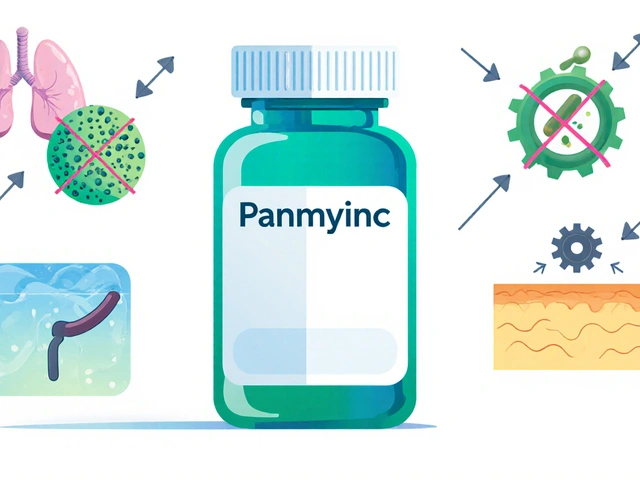Fast Migraine Relief: What Works and What Doesn’t
If you’ve ever been hit by a migraine, you know it can knock you out for hours. The good news is you don’t have to just suffer. Below are real‑world tricks and proven treatments that can stop a migraine in its tracks or at least make it more bearable.
Over‑the‑counter options that actually help
First, reach for the meds you probably already have at home. Ibuprofen (200‑400 mg) and naproxen are the top choices because they cut inflammation, which is a big part of migraine pain. If you can’t take NSAIDs, try acetaminophen with caffeine – the combo boosts the pain‑relieving effect.
Timing matters. Take the pill as soon as the migraine starts, not after the pain peaks. Early treatment stops the wave from building up, and many people say it shortens the attack by half.
Prescription tricks and when to see a doctor
When OTCs don’t work, prescription meds step in. Triptans like sumatriptan or rizatriptan target the brain’s serotonin receptors to shrink blood vessels and block pain signals. They work best when taken within the first hour of pain.
For frequent migraines (four or more a month), doctors may suggest preventive meds such as beta‑blockers, anti‑seizure drugs, or newer CGRP antibodies. These aren’t for quick relief but can cut the number of attacks you have each year.
Never ignore warning signs. If you notice vision changes, weakness, or loss of speech, call emergency services – those could be signs of a stroke rather than a migraine.
Now, let’s talk about natural ways to calm a migraine without popping a pill.
Cold or warm compresses on the forehead or neck can soothe the throbbing. Some people swear by a cold pack, others by a warm towel – try both and see which feels better.
Stay hydrated. Dehydration is a common migraine trigger, so keep a water bottle handy. Even mild thirst can turn a mild headache into a full‑blown migraine.
Magnesium supplements (200‑400 mg daily) have shown promise for reducing migraine frequency. If you’re already taking a multivitamin, check the label – many include magnesium.
Essential oils like peppermint or lavender applied to temples can give a quick, soothing buzz. Just dab a few drops on a cotton ball and breathe deeply.
Finally, manage stress. Simple breathing exercises, a short walk, or a five‑minute meditation can break the stress‑migraine cycle. You don’t need a fancy app; just inhale for four seconds, hold for four, exhale for four, and repeat.
Putting these tips together creates a personal migraine‑relief toolbox. Keep a small notebook or phone note with your go‑to meds, dosage, and the natural tricks that work for you. When a migraine looms, you’ll have a clear plan instead of feeling stuck.
Remember, every migraine is different. What helps one attack might not help the next. Track your attacks, note triggers, and adjust the toolbox as you learn what works best for your brain.
With the right mix of over‑the‑counter meds, prescription options, and simple lifestyle tweaks, you can take control of migraine pain and get back to the things you love faster.
When Sumatriptan isn't cutting it, exploring other migraine treatments can be a game changer. From Botox to lifestyle changes, each option comes with perks and downsides. Understanding these alternatives can help folks find the right solution for their migraine battles, offering relief in a way that meets individual needs.
Categories
Archives
Recent-posts
Intra-Articular Steroid Injections: What You Need to Know About Systemic Side Effects and Limits
Dec, 16 2025



 Medications
Medications




